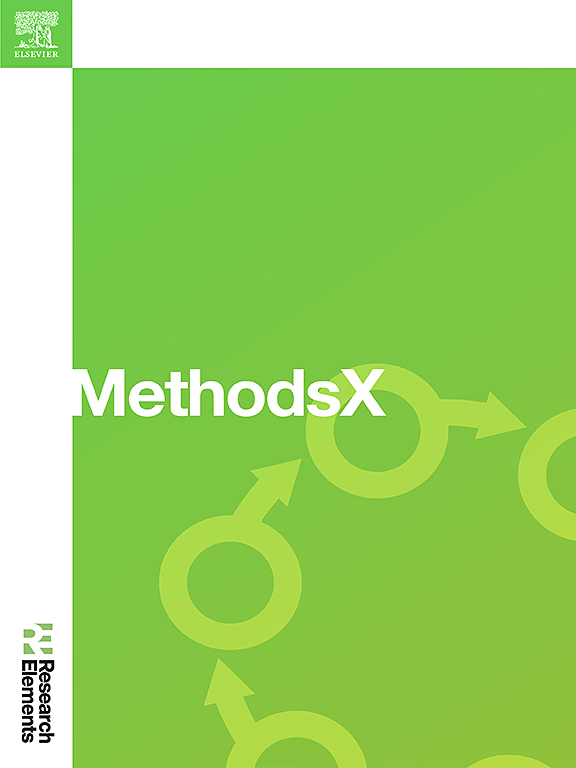一种基于机器学习和遥感地形属性的大尺度土壤重金属背景浓度和空间分布的新方法
IF 1.6
Q2 MULTIDISCIPLINARY SCIENCES
引用次数: 0
摘要
土壤重金属是环境中最危险的物质之一。它们的有害影响可以扩展到周围的系统(空气、植物、水),并在适当的条件下最终可能对人类健康产生负面影响。因此,防止污染和保护原始土壤和工业化前地区免受导致重金属浓度的人类活动的影响是一个优先事项。本文提出了一种新的方法,建立了八种土壤HMs的背景浓度,钴(Co)、铬(Cr)、铜(Cu)、铁(Fe)、锰(Mn)、镍(Ni)、铅(Pb)和锌(Zn),并在尚未受到工业活动影响的地区(即harrat地区)绘制了它们的空间分布数字地图。该方法结合了2017年至2021年Landsat 8/9 OLI获得的52个环境协变量(ECOVs)和航天飞机雷达地形任务(SRTM)获得的地形属性的测量结果。采用随机森林模型和逐步多元线性回归模型对研究的HMs进行数字映射。该方法对未来该地区的任何环境污染/监测研究都很重要,并可应用于其他类似环境。机器学习算法显示了利用可用环境变量和研究在给定土壤环境下影响HMs积累的因素之间关系的强大能力。所提出的方法对于描述所调查环境中HMs的空间变异性是有效的。•提出的方法是一种预测土壤hm及其大面积空间分布的新方法。•遥感/数字高程模型(dem)衍生的ECOVs可用于预测和数字测绘土壤hm,因此对未来的环境监测研究很重要。•可解释的算法(即RF和SMLR)能够利用ECOVs进行HMs预测并建立大面积的背景浓度。因此,机器学习和基于RS/ dem的ECOVs的结合对于克服传统方法确定HMs的缺点至关重要。本文章由计算机程序翻译,如有差异,请以英文原文为准。

A novel method to determine background concentrations and spatial distributions of heavy metals in soil at large scale using machine learning coupled with remote sensing-terrain attributes
Soil heavy metals are among the most hazardous materials in the environment. Their harmful effects can extend to surrounding systems (air, plants, water), and given the appropriate conditions may ultimately have negative effects on human health. Thus, preventing pollution and protecting pristine soils and preindustrial areas from human activities that lead to the concentration of heavy metals (HMs) is a priority. Here, a novel methodology was proposed to establish background concentrations of eight soil HMs, cobalt (Co), chromium (Cr), copper (Cu), iron (Fe), manganese (Mn), nickel (Ni), lead (Pb), and zinc (Zn), and digitally map their spatial distributions in an area (i.e., harrats region) that has not yet been impacted by industrial activity. The proposed methodology combined measurements of the target HMs and fifty-two environmental covariates (ECOVs) derived from 2017 to 2021 Landsat 8/9 OLI and Shuttle Radar Topography Mission (SRTM)-derived terrain attributes. Random forest and stepwise multiple linear regression models were further used to digitally map the studied HMs. The methodology is important for any future environmental pollution/monitoring studies in the area and can be applied in other similar environments. Machine learning algorithms show great ability to use available environmental variables and investigate the relationships between the factors influencing HMs accumulation under a given soil environment. The proposed methodology was effective for describing HMs spatial variability in the environments investigated.
- •The proposed method is a novel way to predict soil HMs and their spatial distribution over large areas.
- •Remote sensing/digital elevation models (DEMs)-derived ECOVs are useful for predicting and digitally mapping soil HMs, thus important for future environmental monitoring studies.
- •Explainable algorithms (i.e., RF and SMLR) are able to utilize ECOVs for HMs prediction and to establish background concentrations over large areas.
求助全文
通过发布文献求助,成功后即可免费获取论文全文。
去求助
来源期刊

MethodsX
Health Professions-Medical Laboratory Technology
CiteScore
3.60
自引率
5.30%
发文量
314
审稿时长
7 weeks
期刊介绍:
 求助内容:
求助内容: 应助结果提醒方式:
应助结果提醒方式:


